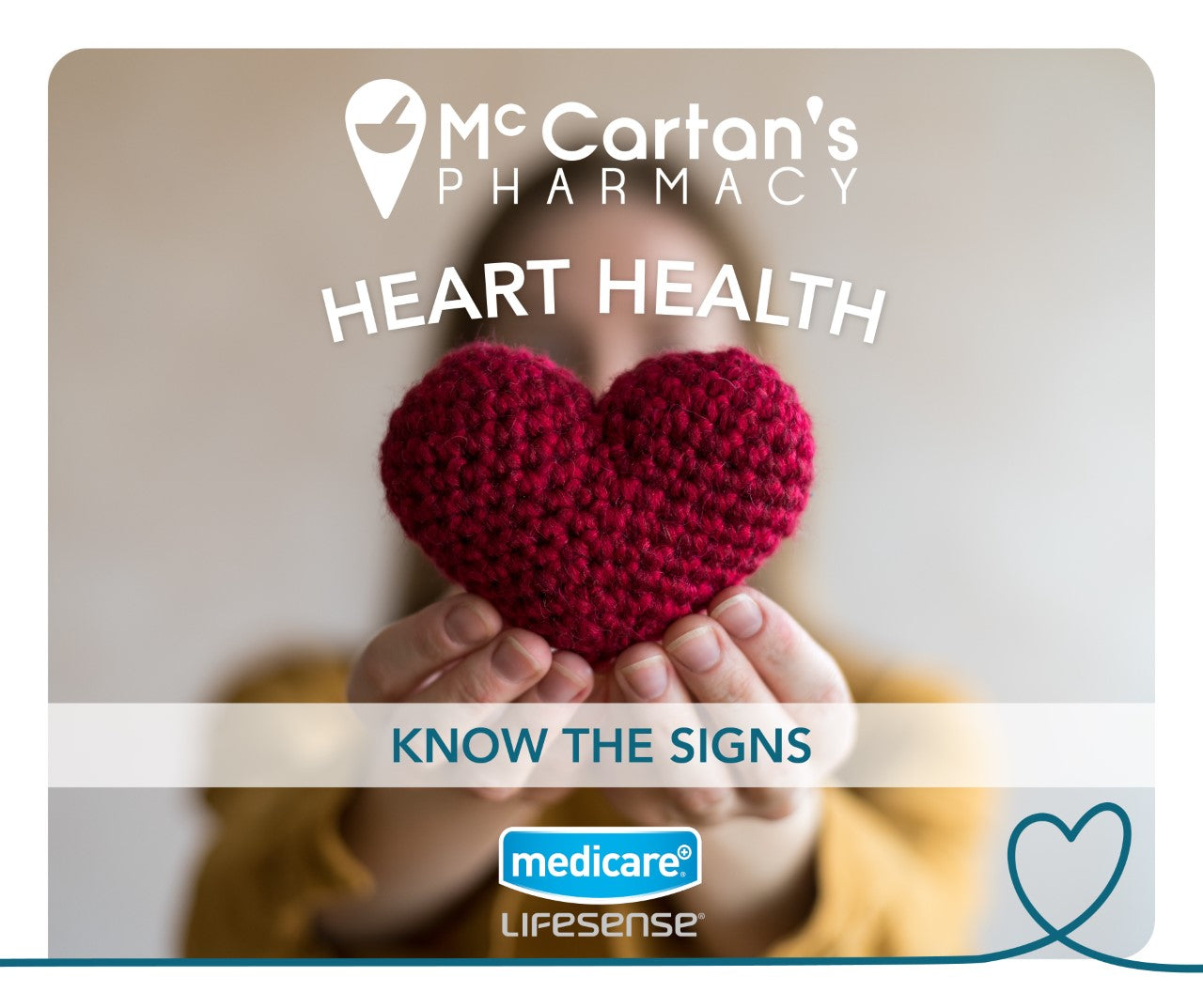
HEART HEALTH: MEN VS WOMAN
It's a misconception that men are more likely to develop heart issues. Women often have differing signs and symptoms which end up resulting in late diagnosis and little being able to be done to reverse the damage. Knowing the signs of heart-related illnesses that women experience can equip you with the power to know when something is wrong.
CARDIOVASCULAR DISEASE
The main types of cardiovascular disease that women have signs and symptoms of that go undetected are Coronary Heart Disease and Stroke. The below information will help familiarise yourself with the indicators of these illnesses so that you can spot them to protect yourself and the women in your life.
CORONARY HEART DISEASE
Coronary Heart Disease occurs when the hearts blood supply is blocked by a build up of cholesterol in the arteries. It causes chest pain (angina) when blood supply is restricted and causes a heart attack when the artery is completely blocked.
SIGNS & SYMPTOMS OF HEART ATTACKS
The most common symptom of a heart attack for both men and women is chest pain. But women may experience less obvious warning signs.
Women:
- Uncomfortable pressure, squeezing or fullness or pain in the centre of your chest lasting more than a few minutes, or goes away and comes back.
- Pain or discomfort in one or both arms, the back, neck, jaw or stomach.
- Shortness of breath with or without chest discomfort.
- Indigestion or gas-like pain, breaking out in a cold sweat, nausea, vomiting, light headedness and collapse.
- Unexplained weakness, particularly in the left arm, or fatigue, anxiety or unusual nervousness.
Men:
- Shortness of breath with or without chest discomfort.
- Other signs may include breaking out in a cold sweat, nausea or feeling lightheaded.
- Chest discomfort. Most heart attacks involve discomfort in the centre of the chest that lasts more than a few minutes, or that goes away and comes back. It can feel like uncomfortable pressure, squeezing, fullness or pain.
- It used to be thought that only chest pain was a sign of heart attack, but it’s possible to have discomfort that doesn’t register as painful. Symptoms can include pain or discomfort in one or both arms, the back, neck, jaw or stomach.

SIGNS & SYMPTOMS OF STROKE
Strokes happen when blood supply to the brain is disturbed/stopped. Cells in the brain begin to die which can lead to brain damage or death. The signs and symptoms need to be addressed in a timely manner in order to be treated. Men and women share a common set of stroke symptoms like:
- Numbness or weakness in the face, arm or legs, especially on one side of the body
- Confusion, trouble speaking or trouble understanding
- Trouble seeing in one or both eyes
- Difficulty walking , dizziness or loss of balance or coordination
- Severe headache with no known cause
But women can also experience more subtle warning signs like:
- Hiccups
- Nausea
- Chest pain
- Fatigue
- Shortness of breath
- A racing heartbeat.
As a result of these more subtle warning signs and the failure to act upon them, women are at an increased risk of dying from stroke than men. As many as 5,000 stroke sufferers every year are failing to get to hospital within the time window to benefit from potentially lifesaving treatment.
The F.A.S.T. acronym is still a good benchmark to decipher a stroke in men and women. It stands for:
Face – has their face fallen on one side?
Arms – can they raise both arms and keep them there?
Speech – is their speech slurred?
Time – time to call 112 or 999 if you see any one of these signs.
POTENTIAL CAUSES & RISK FACTORS
What are the risk factors to developing heart disease?
- Smoking
- Obesity/being overweight
- Hypertension (high blood pressure)
- Family history of heart problems
- Inactive lifestyle
- Diabetes
- High cholesterol
How can you reduce your risk of heart disease?
Eat healthily: Making small changes to your diet can help you reduce your risk of developing heart disease. Always consult your doctor when changing your diet.
Exercise: Starting to engage in light exercise, like walking, can decrease your risk of stroke or getting repeat strokes.
Check your blood pressure: Get your blood pressure checked and know your numbers. If you have high blood pressure, it is recommended to have a blood pressure monitor in your home to get accurate readings, keep track, and better understand your blood pressure.
HOME HEALTH MANAGEMENT – HOW TO STAY ON TOP OF HYPERTENSION
If you have hypertension (high blood pressure), you should make sure to measure your blood pressure on a regular basis to ensure that it is decreasing while trying to reduce it. The only way to do this is to have a blood pressure monitor in your home.
Blood Pressure Monitors like the Medicare Lifesense A5 blood pressure monitors, sold in store, are designed to be easily operated from the comfort of your own home and have clinically proven accuracy.
